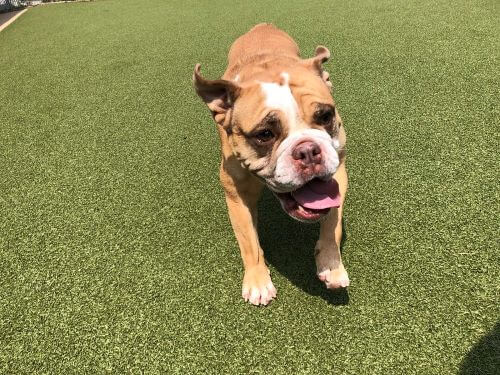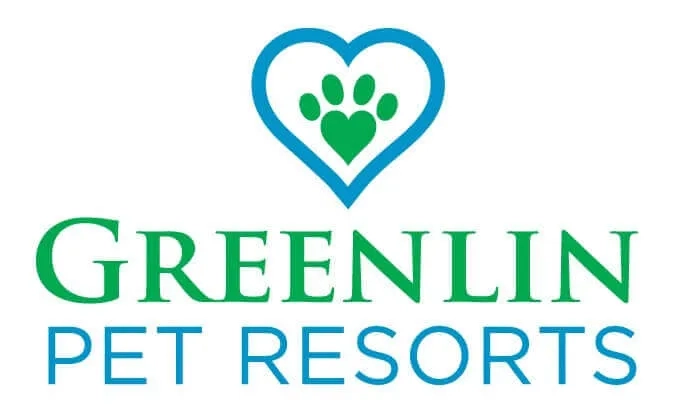The Benefits of Regular Exercise for Dogs with Anxiety

Dogs can struggle with anxiety from puppyhood or develop it gradually throughout their life. Stress and anxiety look different in all canines, but the effects will be overwhelming all the same.
There are many ways to go about treating anxiety in dogs, including medication, diet adjustments, and lifestyle changes. So what’s the best way for how to treat anxiety in dogs?
Well, one of the most productive and a way to improve your beloved pup’s mental wellness is exercise. Keeping active and committing to a regular workout routine can reduce symptoms of anxiety and prevent episodes of stress and panic.
Dogs with anxiety have a much harder time being out in public and oftentimes won’t get to participate in social activities with other dogs. Socialization is an essential part of building a well-rounded life for your pup, but it can be difficult to convince them that there’s nothing to fear.
Greenlin Pet Resorts offers dog training programs that cater to specific doggy personality types so your dog can learn in a safe environment with like-minded pups. We also offer day play and train, combining socialization at our dog daycare with valuable instruction.
To learn more about dog training services at Greenlin, contact us online!
Signs of Anxiety in Dogs
If your dog is struggling with anxiety, they may try and signal this through a unique combination of symptoms. Signs of anxiety can be both physical and behavioral, ranging from a dry coat to unwanted behavioral traits.
Anxiety can also be caused by an underlying condition, such as arthritis, creating a wide variety of additional symptoms to tack onto the stress cues.
Dogs feel stress just like humans do, and it can have similar effects in the long run. Here are some of the most common signs.
Aggression
Fear is actually the most common cause of aggression in dogs. A scared dog may growl, bark, and bite to communicate that they aren’t comfortable, and helping them through the anxiety could mean socialization and desensitization training.
Initial signs of aggression in dogs are typically defensive behaviors, like keeping their distance from what’s causing the anxiety and communicating that they feel threatened through wincing, growling, or hiding.
Destruction
Destructive behavior is especially common in hyperactive breeds or young dogs and can be caused by anything from boredom to anxiety. Generally, dogs exhibit destructive behavior when their owner leaves the house, and that could be their way of communicating that they’re scared.
Dogs with separation anxiety may be abnormally loud, chew on personal items like shoes, and have unusual levels of high energy. These are ways that your dog copes and self-soothes with the fact that you aren’t home.
To combat this kind of behavior, tricking your pup into getting most of their energy out before leaving the house might just save your next pair of shoes!
Depression
Dogs can get sad, just like humans. Depression in dogs can be caused by a wide variety of things, from injuries and lifestyle changes to grief and anxiety.
It may also be beneficial to take a closer look at your dog’s diet, as depression and anxiety can be caused by vitamin deficiencies or an unbalanced protein-to-carb ratio.
Depression and anxiety have many of the same symptoms, including destructive behavior, appetite changes, accidents in the house, and irritability.
The best way to combat depression and anxiety in dogs is to keep them active, engaged, and distracted. Finding activities that they enjoy and adding their favorite treats to complement play time can work wonders.
Depression in dogs may reverse on its own, but an active lifestyle and a well-balanced diet can help your dog make rapid behavioral improvements.
How Much Exercise Does My Dog Need?
Most dog breeds require daily exercise to regulate their energy levels and prevent destructive behavior from boredom or restlessness.
On average, a dog will need at least 1-2 walks per day, and this activity can stimulate the brain as well as nourish the body with exercise. On walks, your dog has many opportunities to explore new sights, smells, and sounds, which can help with desensitization in anxious pups.
A general rule of thumb is to ensure your dog has at least an hour of physical activity every day, and some breeds will require more intensive activity than others.
How Much Exercise Is Too Much?
Too much of a good thing isn’t such a good thing, and this rule applies to dogs too!
Overexercising a dog can be just as detrimental to their health as not encouraging them to exercise at all. An overactive dog is at higher risk of developing bone or joint issues due to overworking the cartilage around the area and creating excessive wear and tear.
Too much exercise can also be dangerous in the hotter months because unregulated playing can lead to overheating and eventually heatstroke.
Look for signs of stiff or sore muscles, damaged paw pads, and behavior changes to determine if you may be prompting your dog to participate in too much exercise.
How Can I Make Sure My Dog Gets Enough Exercise?
A couple of brisk walks a day may not be enough to stimulate your dog’s active breed, but there are creative ways to ensure that your dog is getting enough exercise every day.
If you enjoy your daily walks with your dog, try looking for strategic routes that have obstacles like a steep incline to add a challenge. Dog parks are another great environment for dogs to burn energy by running around with their canine friends.
Hanging out at the dog park every day isn’t the most practical solution for busy dog owners, so facilities like Greenlin Pet Resorts dog daycare exist to give pups a safe place to play all day while you’re away!
How to Treat Anxiety in Dogs
If your beloved family pup is struggling with anxiety, you can treat their symptoms with many different strategies.
The most important thing to remember as a dog parent is to never ignore behavioral changes like anxiety.
Whether you treat their symptoms with medication, diet changes, exercise, or a combination of those methods, facing canine anxiety head-on is the best way to prevent their fear from worsening.
Exercise is one of the most productive ways to decrease feelings of stress and anxiety in dogs, and a consistent daily schedule will promote rapid improvement.
Practice Socializing
One of the major benefits of regular exercise is that your dog will have more opportunities to socialize in public spaces. Time away from home gives your dog the chance to see new sights, hear new sounds, and smell new smells.
Even if your dog starts by simply observing, being around other humans and animals will help them learn that most things aren’t as scary as they seem.
Sometimes, dogs develop anxiety from lack of socialization, so daily exercise is a productive way of crossing two hurdles with one leap and proactively tackling the problem.
We recommend you add some variety as well. Periodically change your exercise routine so your dog gets comfortable consistently being in new environments.
Releases Endorphins
Just like in humans, exercise releases endorphins in dogs that cause a natural high and increased happiness. This feeling canine’s experience is incredibly similar to a runner’s high and can be a great way to promote positive behavioral changes.
Lack of exercise is linked to depression and anxiety, partially because of a withdrawal of neurotransmitters like serotonin and endorphins.
Ensuring that your dog has a consistent exercise schedule can keep a healthy flow of ‘happy hormones’ in their bloodstream, aiding in the prevention of behavioral traits like anxiety.
Decreases Destructive Tendencies
Getting your dog out for morning cardio and letting them burn off some of their energy at an early hour can prevent them from acting out later on in the day.
When you leave, your dog is left to entertain themselves, and that can leave an anxious dog to use destructive tendencies as a coping mechanism. Scratching, biting, and tearing are self-soothing measures that keep your pup distracted while they wait for you to come home.
If they’ve blown off some steam, your dog may have an easier time spending their alone time lounging around instead of destroying your place. The endorphins will definitely help, too!
Greenlin Pet Resorts Is a Dog’s Playtime Oasis!
Dogs with anxiety should still have the opportunity to play and enjoy socializing with friends. Sometimes it can be harder for dogs with anxiety to process all of the sights, sounds, and smells around them, making even play time a scary thing.
Pups with anxiety are still welcome to play, stay, and train at Greenlin, and our skilled trainers can help make the new environment less overstimulating.
Our carefully curated playgroups pair pups with similar personalities, meaning that your anxious dog will never be around hyperactive, loud pets and will instead be accompanied by other dogs like them!
To learn more about what a day at Greenlin will look like for your pup, check out our dog daycare service page or contact one of the six Central Pennsylvania locations near you.
